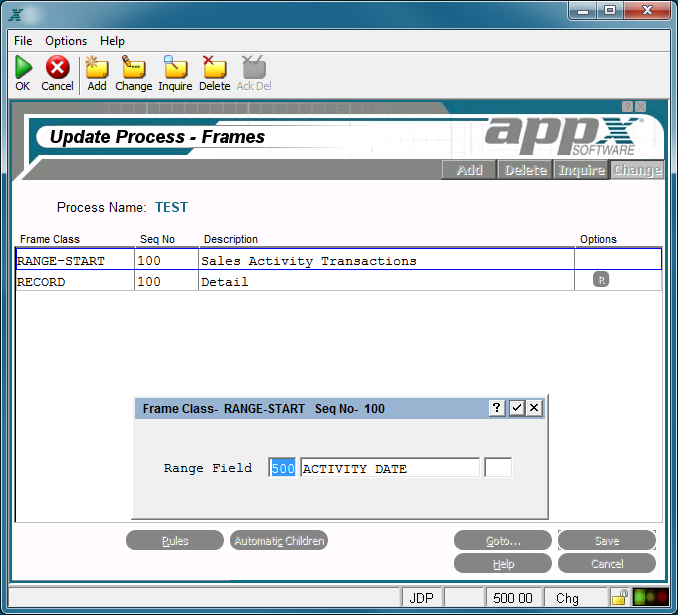Chapter 3-8: Update Processes |
Update Frame Specifications Frame specifications define attributes and statements unique to frames that manipulate fields from each record in a PCF, or perform start- or end-of-range processing. The update Frames overlay displays when you select Enter. The update Frames overlay contains the following fields. Frame Class defines the type of frame with which you are working. Valid options are Range-Start frames print immediately before the first record for which the value in a specific sort field (the range field) changes. Record frames manipulate information read from the process control file. Range-End frames execute immediately after the last record in a series of records that have the same value in a specific sort field (the range field). Seq No displays a sequence number that is defaulted by APPX and used to identify the frame. The default sequence number can be overridden, but must be unique within each frame class for the process. Sequence numbers determine the order of the frames in the process structure. The first frame that is defined in add mode is assigned sequence number 100, and additional frames are assigned a number equal to the highest existing sequence number, plus 100. Descriptive identifies this record frame. The field is for documentation purposes only. Opts are indicators that are present whenever documentation (T), rules (R), or automatic processes (AP) have been defined for this frame. The update Frames overlay contains the following options as described in the corresponding sections: If Frame Class is Range-Start or -End, the screen below appears when you select Enter.
Update Range-Start and -End Frame Class Overlay The update Range-Start and -End Frame Class overlay contains the following field. Range Field designates the application ID and field name of an APPX field in a query process that is used by this update process. The Start of Range and End of Range frames execute based on a change in the value of this field.This overlay contains three fields: one to identify the application ID, one to identify the field name, and one to identify the Seq No. |
Application Design Manual "Powered by Appx Software"1097 ©2006 By APPX Software, Inc. All Rights Reserved |
